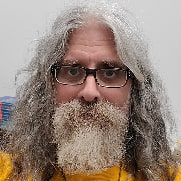Phage Ecology 2021
A special issue of Viruses (ISSN 1999-4915). This special issue belongs to the section "Bacterial Viruses".
Deadline for manuscript submissions: closed (31 December 2021) | Viewed by 19836
Special Issue Editor
Interests: phage ecology; phage evolutionary ecology; phage therapy; phage therapy pharmacology; phage history
Special Issues, Collections and Topics in MDPI journals
Special Issue Information
Dear Colleagues,
Ecology is the study of the interactions of organisms with their environments. This can be with environmental abiotic (non-living) components, environmental biotic (living) components, or in terms of organism distribution over space and time. We can describe these various interactions in terms of organismal ecology, physiological ecology, evolutionary ecology, behavioral ecology, population ecology, community ecology, ecosystem ecology, landscape ecology, mathematical ecology, and biogeography. Bacteriophages (phages) are the viruses of bacteria. Along with the conceptually related viruses of domain Archaea (archaeal viruses), phages generally make a living by finding and then infecting either individual cells or instead clumps of cells, the latter as making up cellular arrangements, microcolonies, and/or biofilms. Our interest is in the ecology, variously considered, of such viruses.
I have been studying phage ecology for ~30 years, with over 100 publications, most of which touch on this subject. My specific interests have been on phage adaptations and tradeoffs, the ecology of phage interactions with biofilms, and the ecology of phage use as antibacterial agents, otherwise described as phage-therapy pharmacology. I have authored, edited, or co-edited roughly 10 monographs or edited volumes including The Bacteriophages 2/e (Oxford University Press, 2006), Bacteriophage Ecology (Cambridge University Press, 2008), The ‘Nuts and Bolts’ of Phage Therapy (Current Pharmaceutical Biotechnology, 2010), Bacteriophages and Biofilms (Nova Science Publishers, 2011), and Viruses of Microorganisms (Caister, 2018). In addition, I founded in 1996 and continue to maintain phage.org, i.e., the Bacteriophage Ecology Group. See also abedon.phage.org as well as facebook.com/Bacteriophage-Ecology-Group-111721928901953/.
In this Special Issue we are inviting submissions on all aspects of phage ecology, from the basic to the applied, from the study of individual viruses to the viromics of environments, and everything in between. Each submission will be given a quick read and editing by myself, consisting of a pre-peer review, prior to submission for actual peer review. We look forward in these submissions to experiencing your passion and enthusiasm for the subject of phage ecology.
Prof. Stephen T. Abedon
Guest Editor
Manuscript Submission Information
Manuscripts should be submitted online at www.mdpi.com by registering and logging in to this website. Once you are registered, click here to go to the submission form. Manuscripts can be submitted until the deadline. All submissions that pass pre-check are peer-reviewed. Accepted papers will be published continuously in the journal (as soon as accepted) and will be listed together on the special issue website. Research articles, review articles as well as short communications are invited. For planned papers, a title and short abstract (about 100 words) can be sent to the Editorial Office for announcement on this website.
Submitted manuscripts should not have been published previously, nor be under consideration for publication elsewhere (except conference proceedings papers). All manuscripts are thoroughly refereed through a single-blind peer-review process. A guide for authors and other relevant information for submission of manuscripts is available on the Instructions for Authors page. Viruses is an international peer-reviewed open access monthly journal published by MDPI.
Please visit the Instructions for Authors page before submitting a manuscript. The Article Processing Charge (APC) for publication in this open access journal is 2600 CHF (Swiss Francs). Submitted papers should be well formatted and use good English. Authors may use MDPI's English editing service prior to publication or during author revisions.
Keywords
- phages
- bacteriophages
- archaeal viruses
- growth parameters
- modeling
- adaptation
- population dynamics
- predator-prey dynamics
- antagonistic coevolution
- transduction
- trophic interactions
- biogeochemistry
- carbon cycle
- productivity
- viromics
- metagenomics
- microbiomes
- environmental microbiology
- biogeography
- distribution
Related Special Issue
- Phage Ecology in Viruses (8 articles)






